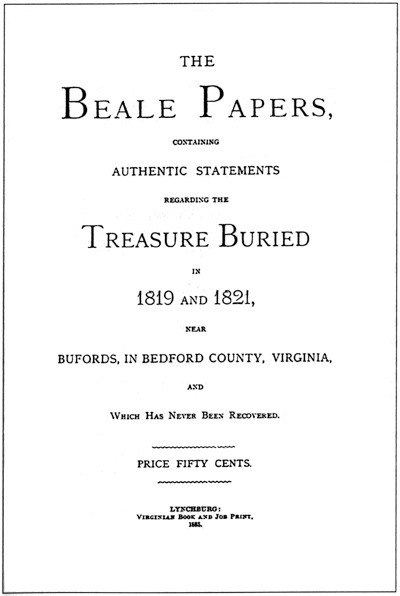
The mystery of the Beale Treasure originates from a small pamphlet published in 1885. It includes the story of buried treasure left undiscovered, and encourages you to find it. The pamphlet describes how a man named Thomas J. Beale had discovered gold out west, with a group of fellow adventurers, and returned to Bedford County, Virginia, twice, in 1819 and 1822, to bury this group’s treasure hoard for safe keeping.
It goes on to include Beale’s plan for later retrieval, either by him upon safe return after his ventures out west, or by Robert Morriss. Robert Morriss, according to the pamphlet, was entrusted with a safe box in 1822 by Beale before he journeyed back out west for a third time to finish his work there. Beale wanted to ensure that if danger struck him and his group, and he wasn’t alive to retrieve the treasure, he left care for someone else to do so. The person chosen by Beale was Morriss.
The box given to Morris is claimed to have contained 2 letters written by Beale to Morriss, revealing the true nature of his travels and buried treasure, and 3 different numerical codes, providing the exact location of the treasure hoard, contents of the buried treasure, and names for whom the treasure belonged to.
Beale never returned, and was only heard from once. Soon after leaving, Beale had written a letter to Morriss. This communication was sent from St. Louis on May 9th, 1822. The letter mentions the importance and secrecy of the box left in charge with Morriss. Beale instructed Morriss to open the box if after 10 years he did not return, and informed him a ‘key’ to decipher the unintelligible numerical codes within the box would be sent to him in 1832. He had left that responsibility to a friend in St. Louis. The key never arrived, and Morriss never deciphered the codes. The treasure remains lost.
Below are 10 interesting facts on this fascinating treasure story

1) The 1885 Pamphlet is the first written source for the Beale Treasure known
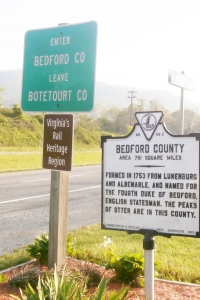
Not until the publishing of the 1885 pamphlet entitled, ‘The Beale Papers containing authentic statements regarding treasure buried in 1819 and 1822, near Bufords, in Bedford County, Virginia, and which never has been recovered” was the public aware a hidden treasure might be buried in Bedford County. The only known source for the story is the pamphlet. There isn’t known to be any other accounts of the story being rumored or written.
And although the pamphlet shares the tale of ‘The Beale Papers’, the original box, two letters, the 3 codes, and the letter from St. Louis, all from which the story are based upon, have never been seen.
It goes to reason then that one way to begin researching the authenticity of the Beale Treasure, and to find the treasure (if there is one) is to investigate those involved in the pamphlet’s making and it’s narrative.
The pamphlet was copyrighted by James B. Ward, and there is record of this event. However, it is stated (in the pamphlet) Ward was only acting as agent for the author of the story held within.
2) The Author of The Beale Papers remains unknown yet today
Who wrote The Beale Papers continues to be of hot debate. The pamphlet begins with Ward sharing how the ‘author’ became part of the puzzling Beale Papers, and why he had decided to reveal all that he knew about the story of the Beale Treasure by way of the pamphlet.
According to ‘The Beale Papers’, Robert Morriss, the first owner of the mysterious box, handed down the contents and shared the history of how he himself came to be part, to the author. Other than a trusted young friend of Morriss, nothing offering identity for the author was given.
It is said the ‘author’ took the responsibility of The Beale Papers from Morriss in 1862, and from that time engaged often, to his financial and emotional demise, in attempting to decode the 3 Beale Ciphers which (upon decipherment) would reveal location, contents, and ownership of the Beale Treasure.
3)Only one of the three Beale Ciphers has been solved
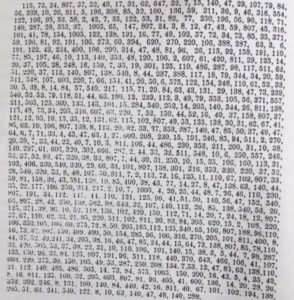
The ‘author’ did have one success during his efforts to decipher the Beale Papers. He was able to decode ‘Beale Paper #2’ revealing the contents of the treasure, by using the Declaration of Independence as a Key. The tale shares how Code’s 2 list of numbers were applied to the Declaration. Each word of the famous document was numbered. Then, the first letter of the matching numbered word of the DOI to the sequence of numbers on the Coded Paper was written. The letters spelled out the following (without mistakes noticed from The Beale Papers)
“I have deposited in the county of Bedford, about four miles from Buford’s, in an excavation or vault, six feet below the surface of the ground, the following articles, belonging jointly to the parties whose names are given in number “3” herewith; The first deposit consisted of one thousand and fourteen pounds of gold, and three thousand eight hundred and twelve pounds of silver, deposited November, 1819. The second was made December, 1821, and consisted of nineteen hundred and seven pounds of gold, and twelve hundred and eighty eight pounds of silver; also jewels, obtained in St. Louis in exchange for silver to save transportation, and valued at 13,000. The above is securely packed in iron pots, with iron covers. The vault is roughly lined with stone, and the vessels rest on solid stone, and are covered with others. Paper number “1” describes the exact locality of the vault, so that no difficulty will be had in finding it.”
The above method and decipherment was included in The Beale Papers. However, when the DOI key was applied, in the same manner, to the other two Beale Papers, nothing intelligible was found. They remain unsolved codes today.
4)The Beale Treasure Story cannot be confirmed to be hoax or real
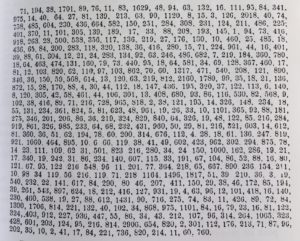
There are almost as many people who believe the treasure story is real, as there are who believe it to be an elaborate work of fiction and hoax. Neither side can be conclusively confirmed.
The lack of verification, contradictions noticed within the story, and the belief actions required to find, transport, and bury such treasure could go unnoticed by so many, are the main reasons given by those who believe it must be a work a fiction. And for this reason, it is thought written by possibly Ward for gain of profit, or by someone working close to him.
However, these reasons are not sufficient enough to conclude The Beale Papers are a hoax. As such, it could very possibly be truth.
For instance, one argument suggests the work is fiction, written by Ward himself, because such words like ‘Stampede or Improvise’ supposedly written by ‘Beale’ within the pamphlet, do not have written account of usage until many years after 1822. However, it can’t be proven those words didn’t exist. They may have been words spoken in the social circles of Beale, and a written record just hadn’t happened yet.
Then there are questions who was Thomas J. Beale? Did he exist? What about Morriss? Did he have access and a known honorable reputation for Thomas J. Beale to have considered him? And then what about the supposed finding of Gold? It was claimed to have been found about 300 miles North of Santa Fe, New Mexico. Are there traces of Gold Mining found there?
Much of the research done on the above matters, and others, share findings that the story, as told, ‘could’ be true, given leeway to various circumstances and a few discrepancies made by the telling of the ‘author’. The ‘author’ was relaying information from years ago, and it is reasonable that a few mistakes/anomalies noticed could be accounted for by time’s passing and fading memories.
5)The Beale Treasure story attracts both physical treasure hunters and codebreakers

Those people who believe there is some remnant of truth to the Beale Treasure story seem to attack it in two different ways.
They either go on physical search of the treasure after investigating and researching as much as possible from what is given, or they spend their efforts in trying to decipher the codes.
Over the years many people have physically searched for the treasure.
6)Mel Fisher, famous for finding the lost treasure of the Atocha, hunted for the Beale Treasure
One of the most well known searchers for the Beale Treasure was Mel Fisher. Fisher is famous for investing 16 years into the search for the shipwrecked Atocha. His motto, ‘Today’s the day’ kept the belief and energy up for final discovery of the 1622 shipwrecked vessel’s treasures on July 20th, 1985. That summer day turned out to be ‘The Day’ of celebration after years of combing the ocean floor.
In 1989, Fisher took to combing the ground, in search for the Beale Treasure, and applied his motto to that lost treasure. The few months he spent searching in Virginia didn’t yield any treasure hoard, but he believed it possible for treasure to be found.
So do many others, and the search for the treasure continues, with thoughts of ‘Today’s the day’.
7)The Beale Ciphers are believed solvable (by some)
Besides physically searching through the mountains and valleys of Bedford county Virginia for where the lost treasure of Beale might rest, many put ‘Today’s the day’ thought and hope into the solving of the Beale Ciphers. At any moment, someone could discover and apply the correct ‘Key’ to the remaining two numerical codes. This would reveal the messages of where exactly the treasure was buried, and who it once belonged to.
It is believed either the correct ‘text’ needs realized and applied to the codes, or the correct method to apply the Declaration of Independence as a key needs realized. As mentioned above, the story included how the Declaration was used to solve Beale Paper #2. And so it’s possible it is used for the others.
But instead of numbering the words of the Declaration, another numbering of the Declaration might be used. For example, the numbering of letters, syllables, every other letter, etc. could have been used to encrypt the two unsolved numerical codes. Or a double layer of encoding was applied on the last two.
And it is possible another text, other than the Declaration, was used. No one knows for sure.
8)James B. Ward was a Freemason
Because James. B Ward was confirmed to be a Freemason, if only briefly, and The Beale Papers seem to use some masonic imagery and terms, it has been suggested the ‘text’ needed to use and decode the Beale Paper 1 and 3 could be a Masonic Text. This is one of the reasons given for why a text can’t be found, since many public texts have been tested, but Masonic Texts are secretly held.
Another related theory to the above and put forth has been that The Beale Papers might not lead to a physical treasure, but more of a spiritual type treasure, like the search for the Lost Word in Masonic Lodges.
This would suggest the treasure hunt wasn’t so much a hoax, but it’s purpose and meaning is not one which was meant to find a monetary stash of gold, but one within yourself, or a secret understanding and wisdom given by solving the last two codes.
9)The old chimney of Bufords Tavern still stands
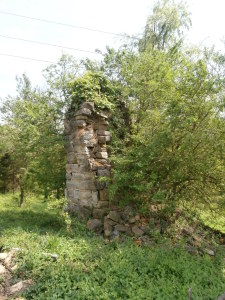
One of the few features linking back to Beale’s time is the old chimney of Bufords Tavern. As shared above in the decoded message of Beale Paper 2, Bufords provides an area to start a physical search from. The message from Beale states: “about four miles from Bufords”. This is believed to be Bufords Tavern where Beale was known to have visited.
The old remains of the chimney set along side route 460 in Montvale, Bedford County, VA, behind a home and on the edge of a pasture (It is guarded by a big dog). It is from this point that a 4 mile surround indicates where the treasure could be buried, if one believes the Beale Papers are real.
10) The Beale Treasure is a legendary treasure hunt
Until more evidence can be found to either prove or dis-prove the legendary Beale Treasure, the hunt for this lost treasure will continue on. The allure and fame brought to the person who does so, along with riches, is enough to keep people researching.
They wouldn’t have to find the ‘lost treasure’, but only find some clarifications to the hunt. What if the original letters, the missing key from St. Louis, evidence of a Beale in Santa Fe, evidence of where the treasure was (but found long ago by someone else), or what if someone finally breaks one (or both) of the last two unsolved codes?
Any of this can happen at any time. It is a mystery that beckons those daring enough to take up the challenge.
However, there is a very important warning to remember. One which was given in the 1885 Beale Papers itself. It is to learn from the ‘author’s’ experience of having let the desire to solve the ciphers consume him to unfavorable conditions. The warning is as follows:
“Again, never, as I have done, sacrifice your own and your family’s interests to what may prove an illusion; but as I have already said, when your day’s work is done, and you are comfortably seated by your good fire, a short time devoted to the subject can injure no one, and may bring its reward.”
Sound advice.
Best of luck with all that you seek. And always treasure the adventure!


This is an interesting topic.
I saw a TV special about it and a guy using a computer noticed that on one of the undeciphered pages the deciphering (using the same code) left a long series of letters that were in order in the alphabet. His point was that this was impossible and that it was likely that the writer of the page got lazy and copied code numbers in order for that stretch (since he was just copying them willy nilly to fill a page anyways.
That’s damning, but not 100% in my opinion.
Hi Buckeye Bob, That would be the ‘Gillogly Strings’ found by James Gillogly, and as you say the odds of them randomly appearing are extremely unlikely.
So we must assume they were placed in there, but why is the question.
I plan to write a separate post on this….but my thoughts is the DOI is the key for all 3, but used differently. (I lean towards a belief that the codes can be broken, messages found, but might not lead to the treasure stated in The Beale Papers- that was a ploy/story)
Within the Beale Papers is the ‘author’ of the story saying the following:
“To systematize a plan for my work I arranged the papers in order of their length, and numbered them, designing to commence with the first, and devote my whole attention to that until I had either unraveled its meaning or was convinced of its impossibility- afterwards to take up the others and proceed as before.”
What is interesting is the ‘author’ who wrote the above actually decoded the Paper numbered 2, which he wasn’t supposedly (according to the above) even working on to decipher. (although maybe after finding the strings he decided to move to 2)
Now it is also true he could have numbered them differently then Beale had….but it makes me think perhaps Beale placed those strings in there so if the method to decode cipher 2 was first used on 1 (which gave the strings), they would be encouraged in some way to continue or know they were on the right track.
The ‘key’ was supposed to be sent to Morriss in 1832, and so maybe only the DOI was going to be sent and Beale thought to be safe (what if Morriss had passed away?), only someone ‘considered worthy’ (give effort) would be able to decipher the messages using it in someway.
Imaginations can be used here….. what if clues are in the ‘story’ on how to use the DOI for the remaining unsolved codes? (which would be different, possibly more difficult than cipher 2’s method)
I don’t know…..no one does….and it all depends which belief you lean towards as to what plan of attack you use…… complete hoax/fiction and codes 1 and 3 are gibberish only, fiction but codes can still be broken (with codes 1 and 3 holding messages revealing true purpose), real (with treasure still able to be found or with treasure discovered long ago), or something else…
It’s fun to work on and I like to visit the area….
Yeah, I wonder if those letter codes on page 1 was a clue to deciphering page 2.
I just don’t see a clearly defining anything from that alone.
This is definitely something I want to get into sooner or later. A person needs to look themselves to know what they will think.
Thanks Jenny,
The amount of gold mined and the transported, hmmm? Interesting none the less. Maybe plan a Fennboree outing for Buford’s Tavern.
One thing of note that pulled me away from the deciphering of the beale papers, was the misprints of the printed Declaration of Independence used as the key against the given deciphered text. If you actually use the words from the Declaration of Independence, most of the text is unreadable.
Jenny:
Great website.
Regarding comments concerning the Declaration of Independence as a key to the mystery, your readers may wish to take a look at a survey published here: http://www.lasthaunting.com/essays, entitled: A Survey of Declaration of Independence Word Frequency in The Beale Papers and 100 “Classic” Short Stories.
The survey examined the frequency of DOI words (six letters or longer) in the text of TBP and 100 “classic” short stories. The survey found that The Beale Papers contained significantly more DOI survey words than any of the short stories surveyed, thus suggesting the possibility, at least, that the text hides a coded message or secret writing based on the DOI.
Very Interesting! Thanks for sharing this, Rob.
122=5 double the added code digits.=10
113=5+10=15=O add them to single code digits=15
6=6+10=16=P carry on.
140=5+12=17=Q I think my book, beale treasure map to cipher
8=8+10=18=R success is now out of print
120=3+16=19=S
in view of recent developments re the masonic influence the name of jays zebidiah decoded in my book links the beale story to the masons bibically also the bit with e.a. Poes name decoded helps
I’m fairly certain of the following information: Beale, was the youngest son of Thomas Jefferson and Sally Hennings. Which would have made him 1/8 black. At about nine years of age he was sent away to be educated; not sure where, maybe France. Later, I suspect he lived and worked at Jefferson’s summer home; Popular Forest. The gold silver ore was found at what is now Silver Cliff, Co. It is 300 miles by road from Santa Fe,NM. The ore only had to be roasted to form metallic gold and silver. I found a very old fort that they built nine miles South of Florence, Co. It was laid out to the eight points of the compass just like Popular Forest. On the last trip back they left a huge amount of silver in a cave near Eagle Rock, Mo. He and all of his men were betrayed and killed by his so called friend in St Louis, Mo.
Sam Peppiatt
Do you have more information on the cave near Eagle Rock, Mo?
Jenny, Follow up. I meant to say there oldest son, there first born. Jefferson’s wife passed away, so when he went to France with his daughter, he brought Sally Hennings along to help take care of her. sally was very young, and he was alone————–anyway this explains a lot, why there inn’t any record of Beale. He had to stay under the radar so to speak. Sam
Here is an interesting fact; if anyone is interested. The Beale Treasure is probably buried in a shallow depression, in a field about four miles up the North fork of Goose Creek from Montvale, Va.( By Google Earth yard stick). The field is between Goose Creek Valley road and Pike road, just before the Walnut Grove Church. The depression is dark in color, about 500 feet from a big shed.
You can lead a man to treasure but, you can’t make him dig.
I’m always interested in new thoughts for Beale…..
Thanks for those given….
I’ve been to Walnut Grove Church, and can’t picture where you mean….I’ll have to get my pictures out and see if I have a shot of the location you mention.
If not, I guess, I’ll just have go visit there again…lol…. it’s about time for another visit anyway 🙂
Hi Jenny! The field that I’m talking about, is in a very small valley. From the church parking lot drive SW two tents of a mile along Pike road. The field with the dark colored depression will be on your left. The dark color is unusual, because all of the other fields around there are light in color. Iron minerals have leached out of the under lying rock to give the ground it’s dark color. In 1984 the rock was exposed; it has sense been covered over for growing crops / farming.
I was at the church once too but, without a map. I was so turned around I didn’t know which way was up. Sam
Speaking of maps; there was never any mention of a map, so; how did the men that were left behind in Colorado know where the treasure was buried? It like, they knew exactly where it was ————–
Can someone explain that to me? Sam Peppiatt
Jenny,
More thoughts on the Beale, for what ever it’s worth. It recently occurred to me that his so called friend, in St Louis may have been a woman. I mean would you ask a guy to mail a letter for you in ten years? Probably not. Records show an M.P LeDuc, Mary Phillip LeDuc. A French woman / French Canadian. Also,the name LeDuc, was associated with a map showing the location of the cave. At any rate, I’m fairly certain Beale was betrayed / killed for the tons of silver left in a cave near Eagle Rock, Mo. He may have told her too much————–
Just watched a show on this this evening. This guy sure was a trusting soul and how could he have moved all those pounds of gold and silver in just two trips? And the impression I got was that he did it alone. It would’ve taken more than 1 wagon to pull all of that plus men to man them. I’m thinking he more or less buried the gold and silver where it was found or pretty close to the area and that it was buried a little at a time. could these papers have been created by him to throw others off the track? Just could be. And if it does exist maybe people should be rethinking what THEY would do in a case like that. Another thing I find odd is that if the treasure was to be shared with others, would they have let one lone man have soul ownership of it to take their shares and hide it without them knowing where it would’ve been buried? I think that it’s just his share that was buried and it was buried close to where it was found in the first place. Sounds more feasible that way and that it was split up by everyone who could lay claim to it as well.
Sam in the letter it said they all were familiar with the location.
If you have had the code very long it stands out that there’s mathematics and counting involved.
Just some comments:
Thomas J Beale was not the son of Sally Hemmings and Thos Jefferson.. None of the siblings said they had a brother named Thos.. The VA census of 1810 shows a listing of only a “Thomas” working summers at Polpar Forest. A reason for no last name was because it was not an accepted thing to have sex with a freed slave or “half breed.” His mother was a freed slave, or half breed, or a mulungeon.
The original tavern is not in Montvale., according to Lucy Buford, at 94, who told us where it was and she played there as a little girl, just before she passed.
My 40 years of research , cipher work, and field work have proven many things have been incorrectly assumed and have led to dead ends.
C. W. Cordogiannis